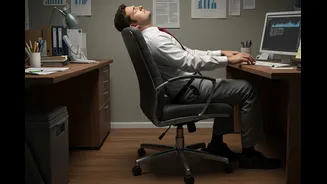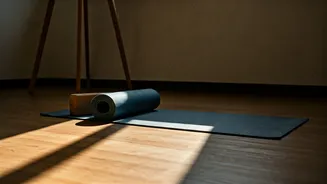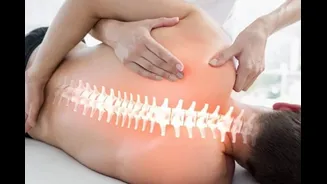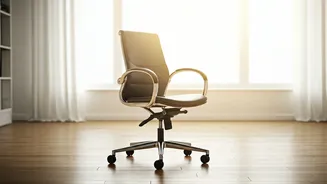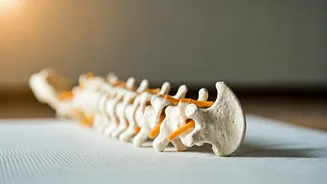Posture’s Crucial Role
Good posture during everyday activities, especially while gaming and using social media, is crucial for teenagers. The article emphasizes how a healthy
spine developed in youth supports a strong, confident future. Given the unavoidable presence of screens in modern life, cultivating awareness and establishing posture-conscious habits is more important than ever. This proactive approach helps prevent long-term spinal issues, underscoring the vital link between current posture and future well-being. Proper posture isn't just about aesthetics; it is a fundamental aspect of overall health, setting the stage for a physically sound and confident adult life.
Limit Screen Time
Reducing screen time is a primary strategy in addressing tech neck. This involves consciously managing the duration spent on digital devices, encompassing smartphones, tablets, and computers. Parents and teens should work together to set and stick to reasonable time limits. Encourage other activities, such as outdoor play, reading, or hobbies, that don’t involve screens. Implement screen-free periods, such as before bed or during meals, to limit overall exposure. This mindful approach helps reduce strain on the neck and spine, contributing to better posture.
The 20-20-20 Rule
The 20-20-20 rule offers a simple yet effective way to protect eye health and mitigate the effects of prolonged screen use on posture. It recommends that every 20 minutes, individuals should look at something 20 feet away for at least 20 seconds. This breaks up periods of prolonged screen time, reduces eye strain, and encourages a change in neck position, which combats the tendency to slouch. It's an easy strategy to integrate into any routine, whether at school, work, or home, and helps promote healthier habits for the eyes and spine.
Ergonomic Setup
Creating an ergonomic workspace is essential for teenagers. This includes using a comfortable chair with proper back support, positioning the computer monitor at eye level, and placing the keyboard and mouse within easy reach. The desk should be at the right height to allow the elbows to be bent at a 90-degree angle while typing. Encourage frequent breaks and stretches to avoid prolonged static postures. These adjustments minimize strain on the neck, shoulders, and back, which is essential when engaging with screens for extended periods. This contributes to better posture and reduces the risk of tech neck.
Movement Encouraged
Incorporating movement into a daily routine is crucial to counteract the effects of tech neck. Encouraging regular breaks to stand up, walk around, or stretch helps to relieve tension in the neck and back. Regular exercise, such as yoga, Pilates, or other core-strengthening activities, also improves posture and strengthens the muscles that support the spine. Remind teens to avoid staying in one position for long periods; periodic changes of posture prevent stiffness and promote spinal health. These practices combat the sedentary nature of screen time, resulting in improved overall well-being and a reduced risk of postural problems.
Core Strengthening Exercises
Core strengthening exercises play a critical role in maintaining good posture. The core muscles, including those in the abdomen and back, support the spine, and strengthening them can improve overall posture and reduce the risk of tech neck. Simple exercises such as planks, bridges, and crunches can be incorporated into a routine. Encourage teens to perform these exercises regularly, ideally several times per week, for optimal results. Regular core workouts stabilize the spine, making it less vulnerable to the negative impacts of prolonged screen time, ultimately contributing to a more upright and healthy posture.
Posture-Tracking Apps
Using posture-tracking apps and wearables can offer real-time feedback and reminders to improve posture. These tools monitor posture throughout the day and alert users when they are slouching. They often provide personalized feedback and suggestions for improvement, encouraging better posture habits. When used consistently, these apps and devices can help teens become more aware of their posture and make necessary adjustments. This technology empowers individuals to take proactive steps in maintaining a healthy spine, increasing awareness of posture and prompting positive behavioral changes.
Consult a Physiotherapist
Seeking professional advice from a physiotherapist is beneficial, especially if a teen is experiencing posture problems or pain. A physiotherapist can assess posture, identify muscle imbalances, and suggest targeted exercises and stretches to correct issues. They can also offer guidance on ergonomics and provide personalized recommendations to address the individual's specific needs. For teens experiencing posture-related pain or discomfort, consulting a physiotherapist is a valuable step towards long-term spinal health. It provides specialized care to address current problems and establishes preventive measures for the future.
Signs of Issues
Recognizing the signs of posture problems in teenagers is important for early intervention. Look for indicators such as rounded shoulders, a forward head posture, or back pain. Persistent discomfort, headaches, or muscle stiffness can also indicate that posture is a problem. Observe how your teen sits, stands, and moves. If any of these signs are present, consult a healthcare professional. Prompt intervention helps prevent the development of chronic spinal issues, guaranteeing that problems are addressed promptly. Early action contributes to a healthy spine and supports overall well-being.


